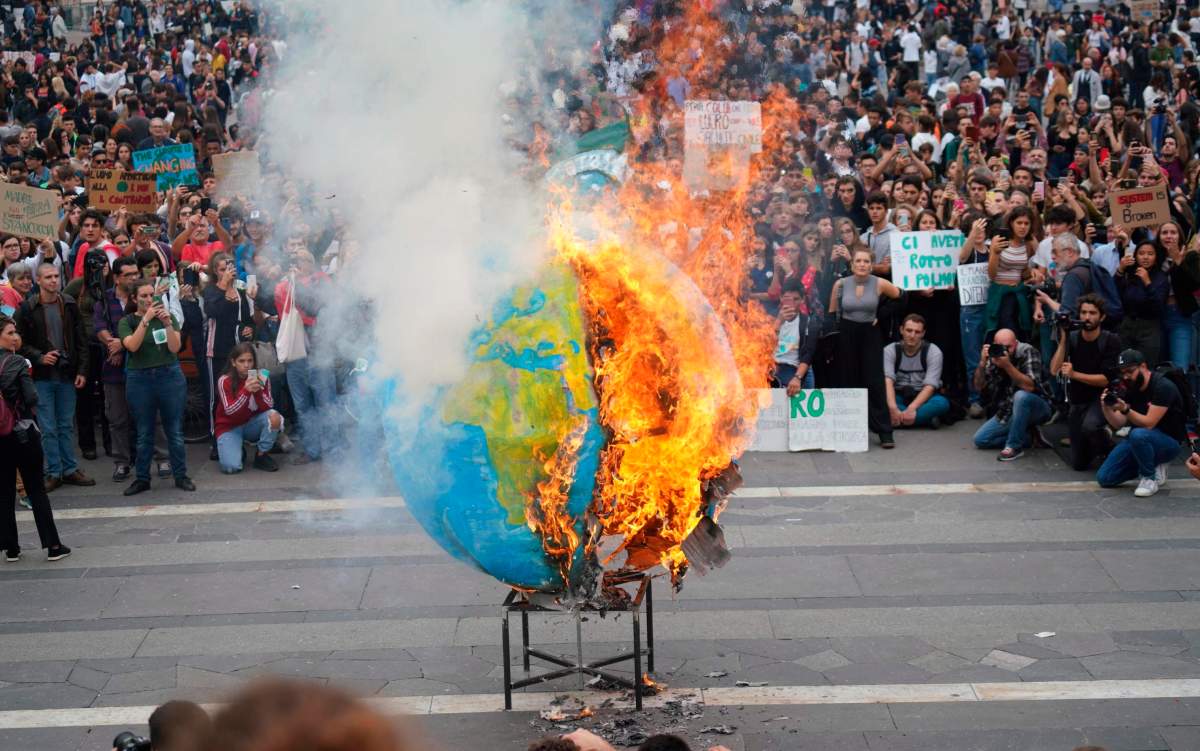Thousands of youth from around the world took to the streets Friday in protest of climate change.

From Ghana to the Philippines, South Korea to Mexico, protestors were united in demanding change from political and business leaders over their approach to the growing climate crisis.
Friday’s protests were the second global movement after a first worldwide strike last Friday, which was followed by a United Nations emergency climate summit a few days later.
Organizers from environmentalist group 350.org estimated Friday more than 6.6 million protestors have participated in demonstrations throughout the week.
WATCH: From Halifax to Victoria, a look at some of the larger climate rallies on Friday

The strike began in New Zealand on Friday with an estimated 170,000 people, or 3.5 per cent of the country’s entire population.
Local media reported around 40,000 people showed up in Wellington, where students delivered a petition to the national parliament requesting the government declare a climate emergency.
In Seoul, South Korea, about 500 students marched towards the presidential Blue House after a downtown rally and urged the government to address climate change, who they say so far gets at ‘F’ for their action.
“I believe government action will change only if the voice of young people are heard because we’re the ones … who are going to be the greatest victims of a climate crisis,” said 15-year-old Kim Do-hyeon, who was one of the organizers.

Get breaking National news
The strikes are inspired by the activism of 16-year-old Greta Thunberg, who began the movement #FridaysForFuture. Thunberg marched in Montreal on Friday, along Liberal Leader Justin Trudeau.
WATCH: Canadian political leaders take part in worldwide climate strike

The movement’s influence even reached Russia, where there are strict protest laws. About 85 protesters in Moscow held up red and white fabric to spell the words “Act Now” in front of Russia’s main government building.
Russia announced earlier this month it would join the 2015 Paris Agreement to fight climate change — one of the last countries to do so. The country is the fourth-largest emitter of greenhouse gases in the world.
Turnout in the Netherlands exceeded organizers’ expectations, with about 35,000 Dutch children joining. Police were forced to reroute the march in The Hague to a more spacious location.
Protesters clearly were inspired by Thunberg, holding up pictures of her and placards reading: “For the Greta good,” “Don’t be a fossil fool,” and “You will die of old age, we will die of climate change.”
Tensions flared up in Lisbon, Portugal, where police removed hundreds of protesters mostly affiliated with the more extreme Extinction Rebellion group, who blocked one of the city’s main arteries.
In April, Extinction Rebellion’s protests in London, England, over 11 days caused disruption, with the group saying it was the biggest act of civil disobedience in recent British history.
WATCH: Thousands march on Parliament Hill demanding action on climate change

Police also interacted with protesters in Poland after they blocked traffic in downtown Warsaw by chaining themselves to a tent.
Milan, Italy, chose a visceral way to show the effects of climate change, with a giant model globe literally bursting into flames as tens of thousands looked on.
Celebrities joined the youth, too. Actor Javier Bardem attended rallies in San Sebastian, Spain, and promoted a documentary he worked on with Greenpeace.
Protests were relatively small in the U.S. compared to last week’s estimated turnout of 250,000 in New York. Only a handful were spotted outside the United Nations, according to local media.
Nevertheless, Thunberg in Montreal said the protesters should be proud of themselves.
“The people have spoken. And we will continue to speak until our leaders listen and act. We are the change and change is coming.”
– With files from Reuters and the Associated Press

























Comments